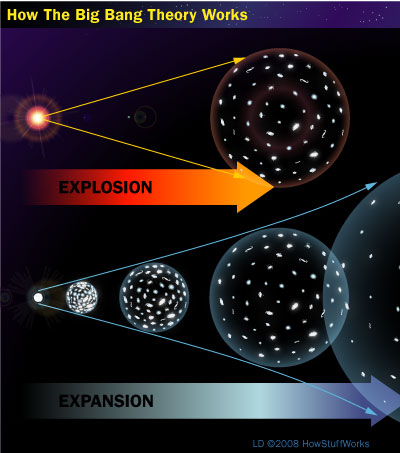The Big Bang theory proposes that around 13.8 billion years ago the universe exploded (or maybe expanded) into being, from an infinitely small, hot compact ball of matter that cooled as it expanded. From there it triggered reactions that cooked up the first stars and galaxies, and all the forms of matter in our present reality.

MIT News reports in their article entitled, “Putting the “bang” in the Big Bang“, Recent observations have independently supported theories for both the Big Bang and cosmic inflation. But the two processes are so radically different from each other that scientists have struggled to conceive of how one followed the other.
Just before the Big Bang launched the universe onto its ever-expanding course, physicists believe, there was another, more explosive phase of the early universe at play: cosmic inflation, which lasted less than a trillionth of a second. During this period, matter — a cold, homogeneous goop — inflated exponentially quickly before processes of the Big Bang took over to more slowly expand and diversify the infant universe.
Now physicists at MIT, Kenyon College, and elsewhere have simulated in detail an intermediary phase of the early universe that may have bridged cosmic inflation with the Big Bang.
While this is very impressive and the article is very informative, the question, How did the big bang, cosmic inflation and the intermediate phase occurred out of nothing?
Let’s be intellectually honest. Something, like the matter and heat, of this universe coming out of nothing is frankly illogical. Read more here.